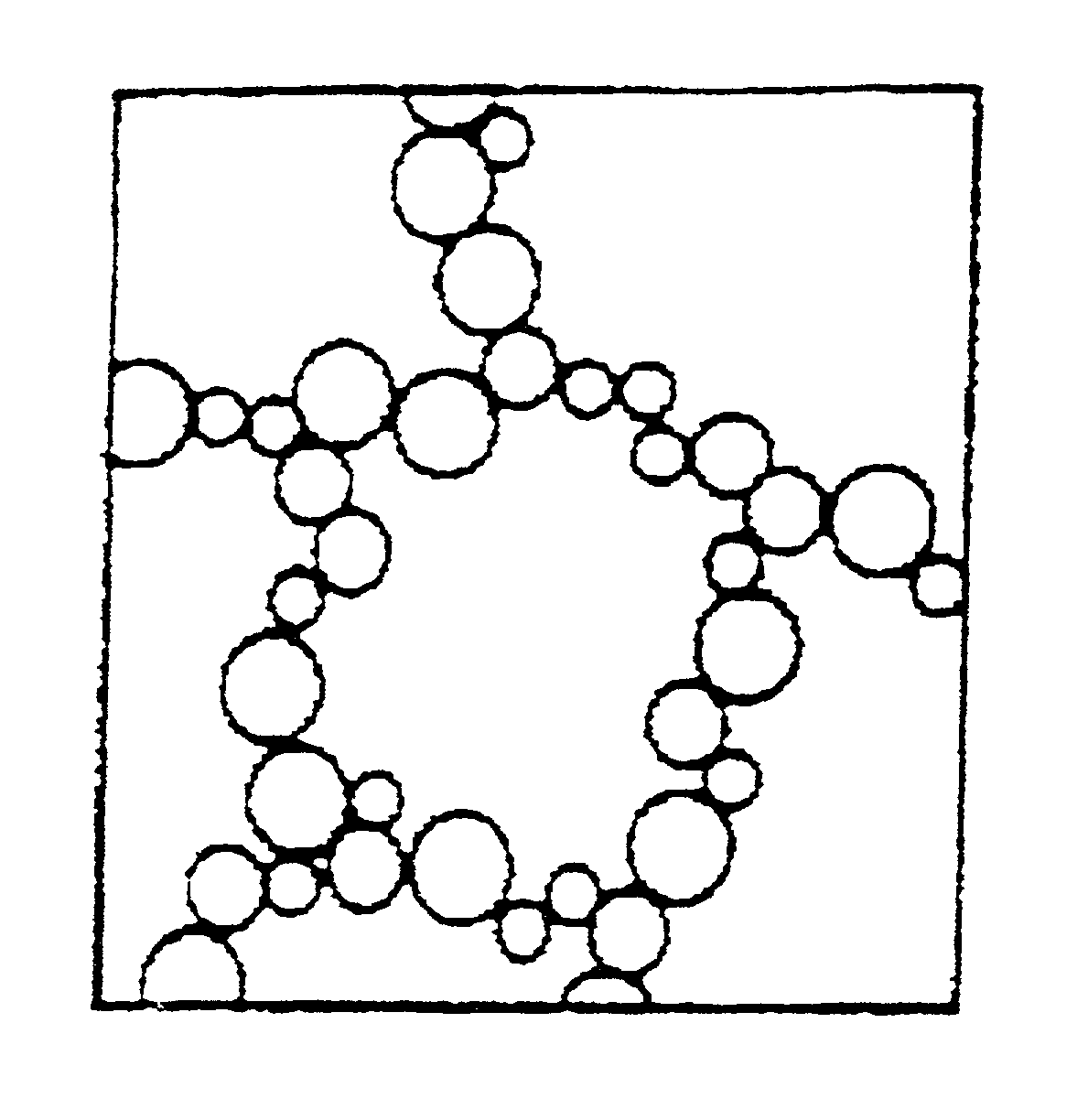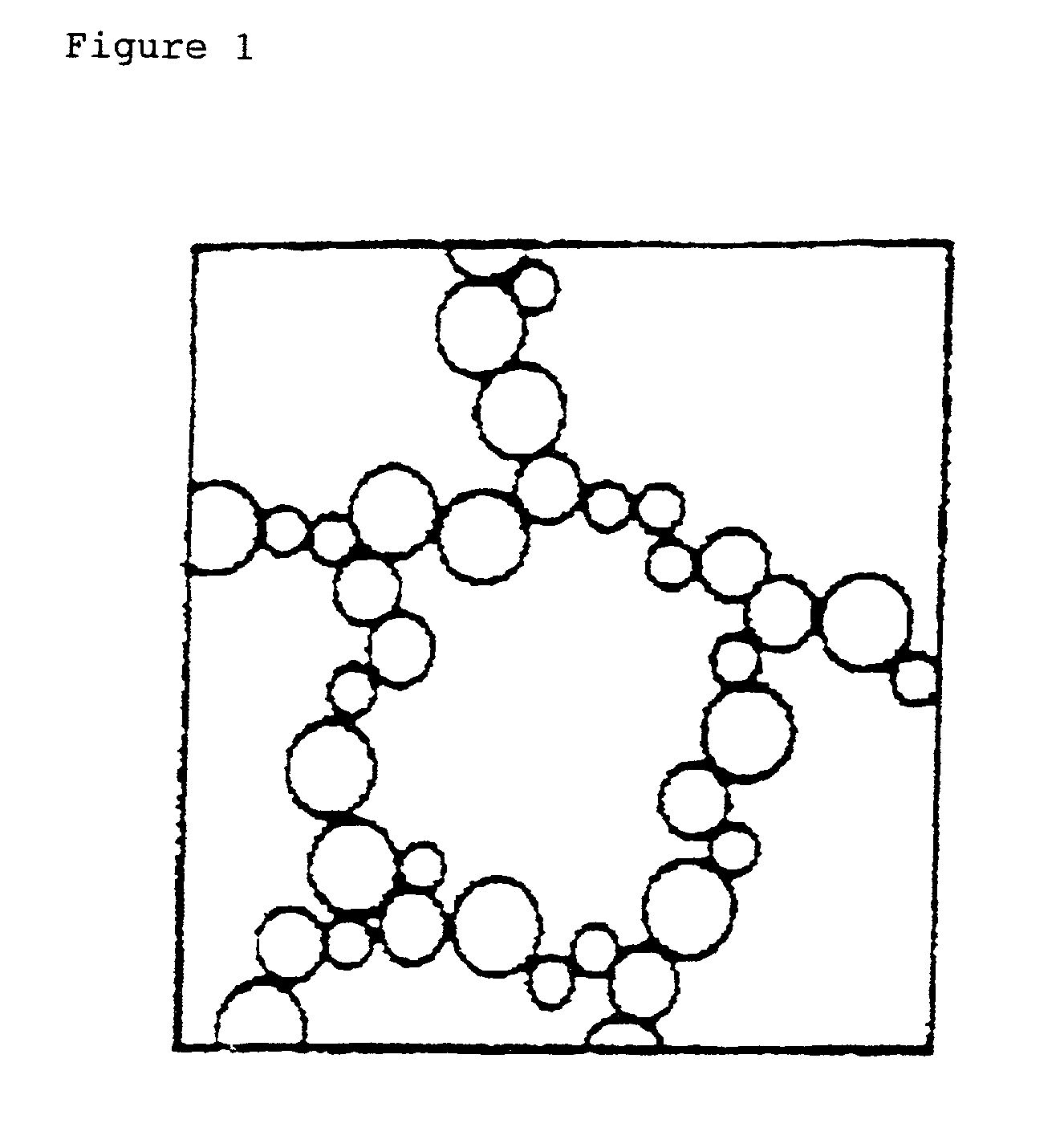Lipid particles on the basis of mixtures of liquid and solid lipids and method for producing same
a technology of liquid and solid lipids and lipid particles, which is applied in the direction of nanotechnology, pharmaceutical non-active ingredients, cosmetics, etc., can solve the problems of inability to produce highly concentrated lipid dispersions at a few micrometers, and affecting the quality of lipid dispersions
- Summary
- Abstract
- Description
- Claims
- Application Information
AI Technical Summary
Benefits of technology
Problems solved by technology
Method used
Image
Examples
example 1
Production of a 40% Lipid Particle Dispersion (Solids Content 45%)
[0148]The composition of the lipid particle dispersion was 40% cetyl palmitate, 5% saccharose ester S-1670 (Mitsubishi-Kagaku Foods Corporation, Tokyo, Japan) and water to 100%. The lipid was heated to 90° C. and mixed using a rotor-stator stirrer (Ultra-Turrax, Janke & Kunkel, Germany) at 8000 revolutions per minute for two minutes with the hot aqueous solution of the surfactant. The raw emulsion obtained was then homogenised in a Micron LAB 40 at 500 bar and in 3 cycles at 80° C. The product was white and of creamy consistency. After cooling and crystallisation of the lipid nanoparticles, the particle size in the product was measured. The diameter was 246 nm and the polydispersity index was 0.179 (measurement method: photon correlation spectroscopy (PCS), device: Zetasizer 4, Malvern Instruments, UK).
example 2
Production of a 50% Lipid Particle Dispersion (Solids Content 55%)
[0149]The formulation of Example 1 was used, the lipid fraction having been increased from 40% to 50%. Production and homogenisation took place as in Example 1. The product obtained was diluted in order to determine the particle size; the PCS diameter was 325 nm and the polydispersity index was 0.190.
example 3
Production of a 40% Lipid Particle Dispersion (Solids Content 45%) Using a Rotor-Stator Stirrer
[0150]Composition of the lipid particle dispersion: 40% fat, 5% saccharose ester S-1670 (Mitsubishi-Kagaku Foods Corporation, Tokyo, Japan) and water to 100%. 24 g of an aqueous surfactant solution was heated to 80° C., and 4 g of molten lipid were added and dispersed for 2 minutes using an Ultra-Turrax (Janke & Kunkel, Germany) at 8000 revolutions per minute. A further 4 g of molten lipid were then added, the dispersion conditions being as before. Successive addition of, in each case, 4 g of molten lipid continued until the total lipid content was 40%. After cooling and crystallisation of the lipid particles, a particle size measurement was carried out in water. The diameter 50% was 12.25 μm (measurement method: laser diffractometry, device: Mastersizer E, Malvern Instruments, UK). A volume distribution curve was measured.
PUM
| Property | Measurement | Unit |
|---|---|---|
| particle size | aaaaa | aaaaa |
| particle size | aaaaa | aaaaa |
| crystallinity index | aaaaa | aaaaa |
Abstract
Description
Claims
Application Information
 Login to View More
Login to View More - R&D
- Intellectual Property
- Life Sciences
- Materials
- Tech Scout
- Unparalleled Data Quality
- Higher Quality Content
- 60% Fewer Hallucinations
Browse by: Latest US Patents, China's latest patents, Technical Efficacy Thesaurus, Application Domain, Technology Topic, Popular Technical Reports.
© 2025 PatSnap. All rights reserved.Legal|Privacy policy|Modern Slavery Act Transparency Statement|Sitemap|About US| Contact US: help@patsnap.com



